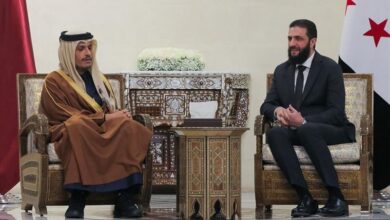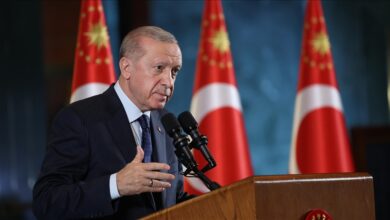
Director of Response Coordinators : The work of humanitarian organizations in northern Syria did not exceed 60% in 2020
The Syria Response Coordinators Group issued a detailed report on the humanitarian events in northwestern Syria for the past 2020, which includes the work of humanitarian organizations and the medical sector in liberated areas and the general humanitarian situation
“The work of humanitarian organizations in 2020 is very weak, but we will not deny their role in the humanitarian response to civilians in the region, despite the presence of several obstacles that caused the organizations’ role to be largely deficient,” said Muhammad Mahlaj, Director of Response Coordinators .
Al-Mahlaj added: “Humanitarian organizations have completed their role and work by nearly 60%, and their work has not been completed completely, and the organizations’ failure to fully implement their work is the existence of a gap between existing needs and funding, in addition to the reason for the changes that occur during this period.”
Al-Mahlaj explained that there was a financing plan for a winter response of $ 6 million, but after the damages that occurred as a result of the rainstorms, we were not able to fully cover the humanitarian needs.
Regarding the work of the health sector in 2020 and with the spread of the Corona virus, Al-Mahlaj said: “The health sector in the north is already dilapidated, as a result of the large targets, the lack of funding and the lack of something required to provide for this sector.”
Al-Mahlaj continued, “With the spread of the Corona virus and the increase in the number of infections with it, especially among the medical staff, which exceeded more than 13% of the total infections, which generated many problems within the medical sector.”
He pointed out that “one of the problems facing the medical sector is converting some hospitals and health centers into hospitals for the Corona virus and special isolation centers for this virus only, and directing support and funding only for the Corona virus, which causes weakness in the needs of the rest of other diseases, which resulted in a major defect within the sector. Medical ”.
Muhammad Mahlaj said of what the response coordinators provided in 2020 for the displaced: “As a result of the pressure, we could not deliver everything that is inside, and our greatest focus was on the displaced people and camps, and we sometimes went to towns and villages to study the needs, but the greater focus was on the displaced people living in Camps because they are the most vulnerable group in society.
He added: “In 2020, and in the first three months, there was a large displacement movement that reached nearly a million civilians, and the displacement situation decreased in the sixth and seventh months of the same year, as a result of the ceasefire that was signed between Turkey and Russia,” noting that “the return of some The people of their areas were weak, because they feared a move by the Assad regime and that the violations by the Russian forces would not stop.
It is noteworthy that the Assad regime forces and the Russian forces launched a military operation at the beginning of 2020 on the northern Hama countryside and the southern Idlib countryside, to control it, which led to the displacement of more than a million civilians and the death of thousands, in addition to the almost complete destruction of civilian property and the destruction of the medical sector and public facilities. This attack is the fiercest since the beginning of the revolution in Syria.




